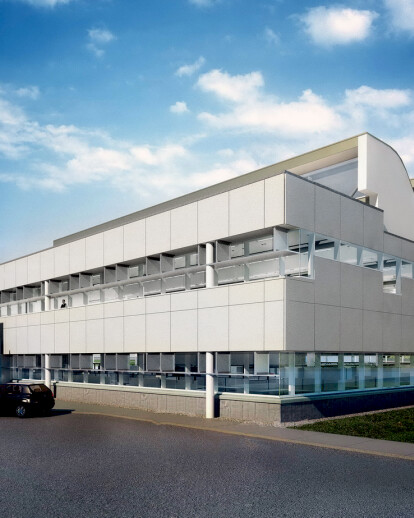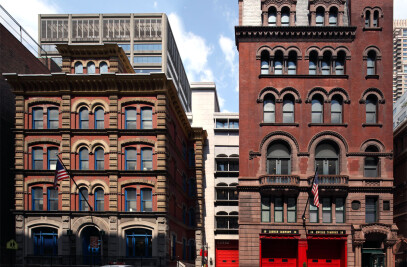This new 30,000 sf, $9.5 million high-performance office building will provide an expanded regional administrative center for the New York State Department of Environmental Conservation (DEC). The building is the DEC’s first project designed under New York State’s Executive Order 111 and is projected to achieve a LEED “Gold” rating. The building makes extensive use of day lighting, direct solar gain and air stratification with automated shading integrated with lighting controls. Long span steel trusses allow for an expansive open workspace, flooding the main space with natural light. In addition, the new building is also DEC’s first building to implement its new storm-water design regulations for New York State. The site design takes advantage of large-scale biofiltration and storm water collection & retention as well as a hybrid of pervious and impervious parking areas. Site planning was designed to maximize natural & planted areas, reduce heat-islands and protect native species. The building’s modular design allows for the minimization of construction waste and cutting, thereby also reducing overallconstruction cost through standardization and decreasing environmental impact. In addition, construction materials that are locally produced and make extensive use of recycled content were selected whenever possible. The interior of the building features a pressurized raised floor and modular partition system to accommodate future changes in use patterns with flexible power, voice, data and HVAC distribution while eliminating most ductwork. In addition, working with several national office system furniture companies, a new ‘green’ work-surface was developed for use in the open office landscape. Consisting of a clear-powder coat finish over the manufacturer’s standard MDF substrate, the new worksurface substantially reduces the material and energy required to produce a final product This innovation in the project is now being offered by several manufacturers as a ‘green’ alternative. In addition, DOE2 computer modeling indicates that the building will have energy saving of at least 42% when compared to a code-compliant or LEED baseline building and makes the project eligible for substantial NYSERDA grant funding.The project has been featured in Metropolis magazine for its innovation in sustainable design.
Products Behind Projects
Product Spotlight
News

Fernanda Canales designs tranquil “House for the Elderly” in Sonora, Mexico
Mexican architecture studio Fernanda Canales has designed a semi-open, circular community center for... More

Australia’s first solar-powered façade completed in Melbourne
Located in Melbourne, 550 Spencer is the first building in Australia to generate its own electricity... More

SPPARC completes restoration of former Victorian-era Army & Navy Cooperative Society warehouse
In the heart of Westminster, London, the London-based architectural studio SPPARC has restored and r... More

Green patination on Kyoto coffee stand is brought about using soy sauce and chemicals
Ryohei Tanaka of Japanese architectural firm G Architects Studio designed a bijou coffee stand in Ky... More

New building in Montreal by MU Architecture tells a tale of two facades
In Montreal, Quebec, Le Petit Laurent is a newly constructed residential and commercial building tha... More

RAMSA completes Georgetown University's McCourt School of Policy, featuring unique installations by Maya Lin
Located on Georgetown University's downtown Capital Campus, the McCourt School of Policy by Robert A... More

MVRDV-designed clubhouse in shipping container supports refugees through the power of sport
MVRDV has designed a modular and multi-functional sports club in a shipping container for Amsterdam-... More

Archello Awards 2025 expands with 'Unbuilt' project awards categories
Archello is excited to introduce a new set of twelve 'Unbuilt' project awards for the Archello Award... More

























